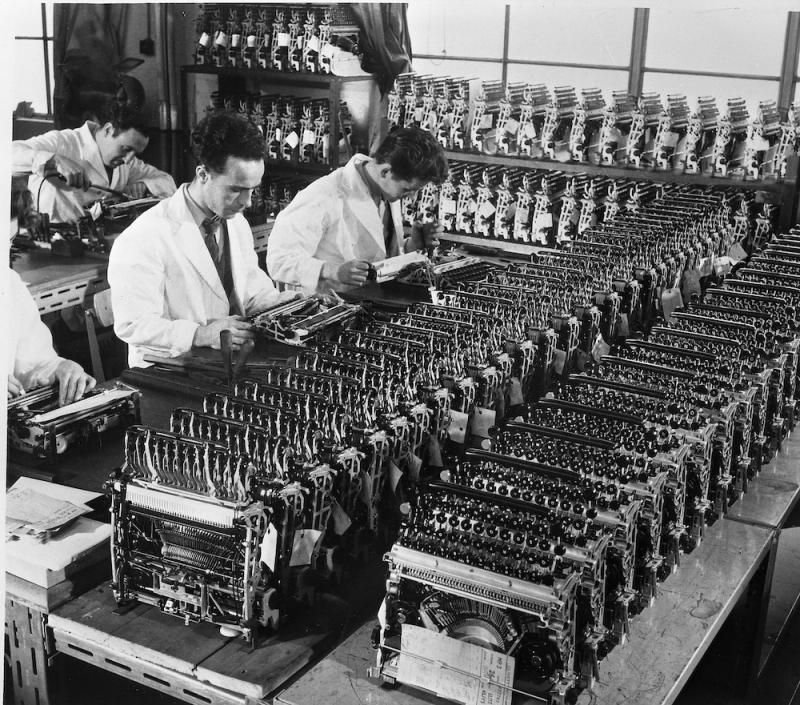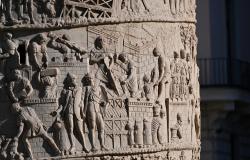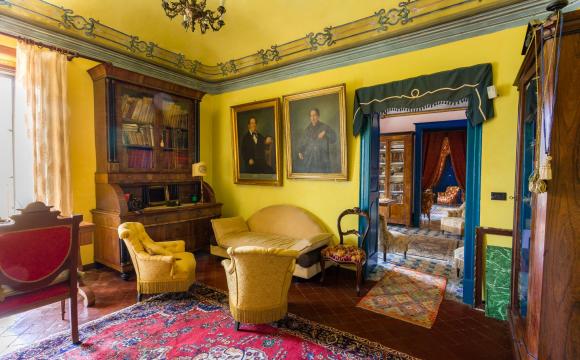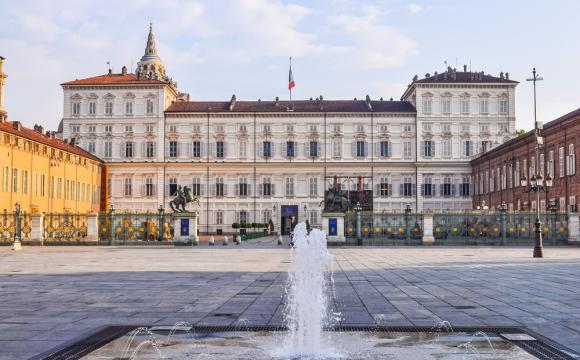Italy’s original typewriter wouldn’t exactly have been the best fit for the cramped shared co-working spaces and unconventional remote-work setups of today.
Manufactured in 1911 by workers at the Olivetti typewriter factory in Ivrea, near Turin, the cumbersome Olivetti M1 was black, crafted from cast iron and weighed nearly 38 pounds (17 kilograms). It featured 42 keys arranged in four rows, eight tabulator keys and one space bar.
It was a far cry from the lightweight Lettera 22, which entered production in 1950 and today remains an icon of Italian style and function. Designed by Marcello Nizzoli, the Lettera 22 measured 8.3 x 29.8 x 32.4 cm, weighed just under nine pounds (four kilograms) and was available in various colors. It was innovative, portable, light and agile — everything the M1, well, hadn’t been. Gaetano di Tondo, president of the Olivetti Historical Archive Association, likens it to today’s tuck-and-go MacBook laptops in its time.
The Lettera 22 would go on in 1954 to win top honors at the inaugural edition of the Compasso d’Oro, Italy’s first and arguably most prestigious industrial design award, which in 2024 will celebrate its 70th anniversary. Five years later, the Illinois Institute of Technology proclaimed it the “best-designed object of the century.” Sixty-six years later, Poste Italiane issued two Olivetti- and Lettera 22-themed stamps. And today, the icon is exhibited in renowned museums worldwide, including the MoMA (Museum of Modern Art) in New York City.
But it wasn’t just the sleek craftsmanship that set the Lettera 22 apart. The Lettera 22 was created to transcend the needs of the upper bourgeoisie and Italian intelligentsia and reach broader audiences, including workers in non-management roles, teachers and secretarial staff. It also found favor among many artists, musicians and writers, including Leonard Cohen, Bob Dylan and Sylvia Plath. None of it would have happened without Adriano Olivetti.
Who was Adriano Olivetti?

When Adriano Olivetti assumed the role of general manager at Olivetti in the early 1930s, his father Camillo told him he could make any business decision necessary — as long as it didn’t involve laying off workers. Back then, Olivetti was a modest family enterprise. But over the next 30 years under Adriano’s leadership, the Olivetti company would evolve into a global phenomenon, and Ivrea would become a hub for ambitious experiments in constructing what he termed a more “humane” industrial city.
The 30-year-old Adriano Olivetti, who had recently returned to Italy from the United States, began his revamping of the company with a subtle but significant change: installing new windows in the two-story building. It wasn’t long before he undertook a complete reconstruction of the factory, swapping out the red brick for glass.
“This way, the workers inside could have a view of the mountains and valleys, and simultaneously, those outside the factory could observe the activities within,” Beniamino de Liguori, Olivetti’s grandson and the president of the Adriano Olivetti Foundation, told me during a recent trip to Ivrea.
The Olivetti factory emerged as the most modern structure not just in Ivrea but across all of Italy; as a result, the town holds status as a protected UNESCO cultural heritage site.
De Liguori describes his grandfather quite vividly for never having met him; that’s largely thanks to his mother, who kept Olivetti’s memory alive through sharing stories. (Adriano died before De Liguori was born.)
“My grandfather was often misunderstood both in society and within the context of his era,” De Liguori said. “He envisioned a society harmonizing with technology.”
The “keys” to harmony

The Lettera 22 was, in a way, a natural outgrowth of Adriano’s vision and the factory’s evolution under his leadership from 1932 until his passing in 1960. Social reform and inclusion were cornerstones of his approach. (De Liguori pointed to his grandfather’s insistence that everyone deserved to participate in cultural life; workers in his factory, some of whom were illiterate, enjoyed access to amenities such as a cinema and a library.)
Though it wasn’t yet the Lettera 22, a new model of typewriter was introduced shortly after Adriano came on board as general manager. The clunky Olivetti M1 was replaced by the Olivetti M20. Alongside the space bar, it featured keys for uppercase and lowercase letters, a return key, a key for advancing the carriage — that’s the part on top that holds the paper — as well as caps lock and backspace keys. Despite these additions, the M20 still weighed about 38 pounds. During that period, the company was manufacturing 13,000 units annually and began exports to foreign markets.
Before the start of World War II, the company unveiled a newer and more advanced model, the M40. When Benito Mussolini’s fascist regime took hold, Adriano Olivetti proposed a project to authorities for community development in the Italian region of Valle d’Aosta. His plans included, among other things, the establishment of a library in each town. (Ultimately, he managed to launch 60.)
However, as a converted Jew who pushed back against the racial laws, Adriano clashed with the authorities. Subsequently, he spent the last two years of the war in exile in Switzerland.
“He never did learn to type on a typewriter,” offered Gaetano di Tondo of the company’s historical archive. But during those two years in exile, Adriano manually wrote what di Tondo called his most significant work, The Political Order of Communities (L’Ordine politico delle Comunità), which laid out ideas for establishing a new political, social and economic balance between central authorities and local communities. Adriano asserted the importance of socializing political power, and believed that action should be taken first at the local level — an ethos he lived out in his commitments to expanding Italian literacy in the communities around him.
With his subsequent book Città dell’Uomo (City of Man), Olivetti advocated for better harmony between private and public life, work and home, and centers of consumption and production, embodied in the physical triad of street-factory-house. He lamented the expansion of Italy’s cities driven by what he saw as uniquely selfish and materialistic motives, lacking in any kind of comprehensive plan based on a broader life vision. (In recent years, journalists and commentators have frequently pointed to Adriano’s influence on the business approach of Brunello Cucinelli, the cashmere tycoon inextricably linked to the small town of Solomeo in Umbria.)
Olivetti, under Adriano’s leadership, evolved into a global company, boasting factories in five countries and distribution networks spanning over 100. Ivrea, once a modest provincial town, burgeoned into a prominent hub of Italian manufacturing, drawing in engineers, designers and factory workers from all corners of the country — a reality that could have looked very different without the values embodied in both the Lettera 22 and in Adriano himself.




















